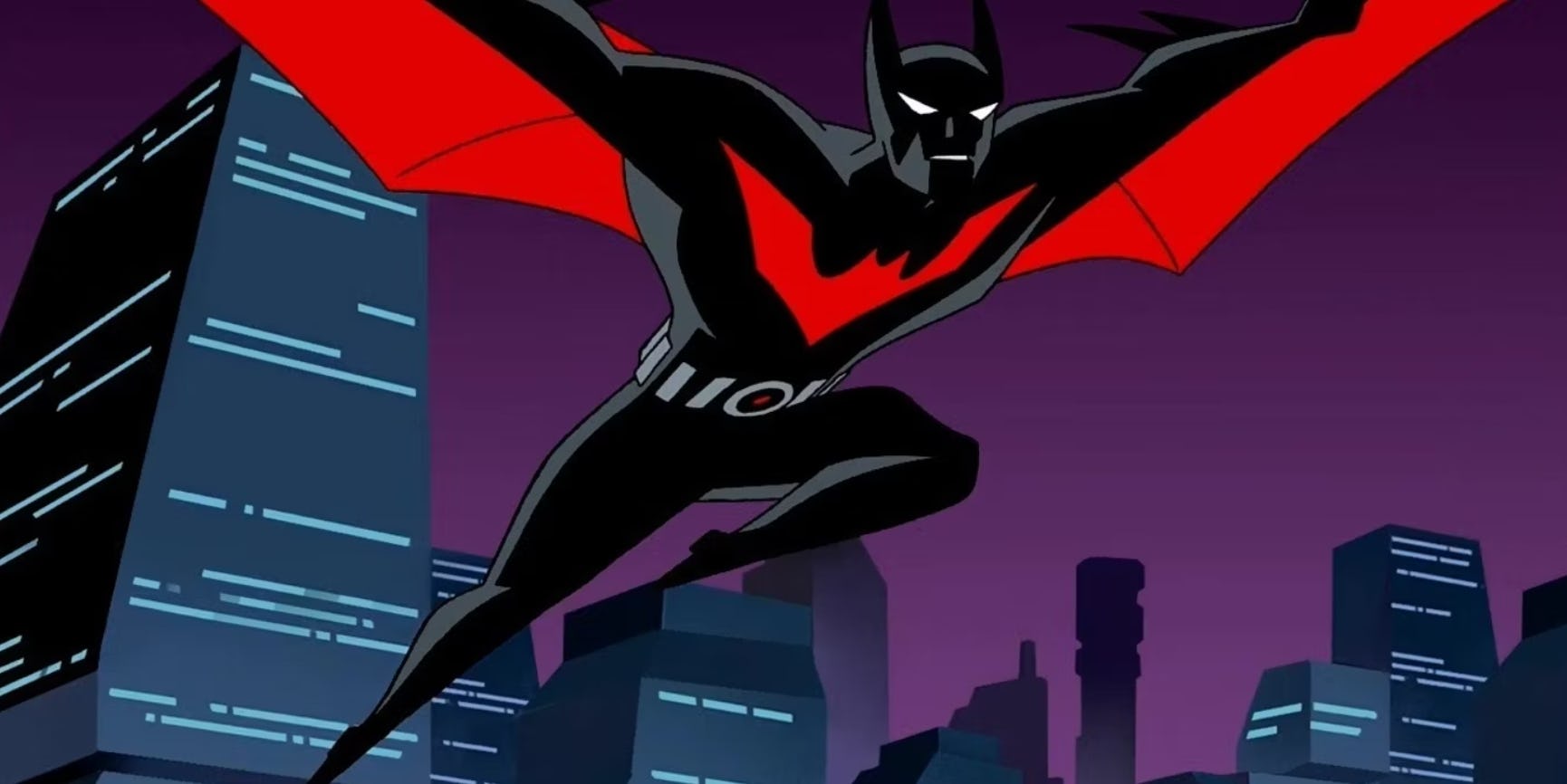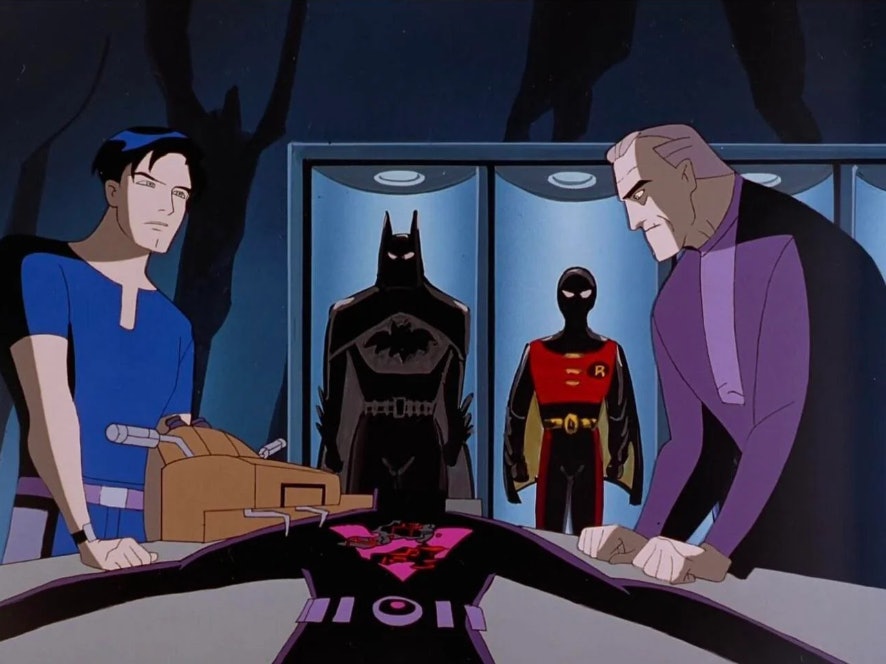
Batman: The Animated Series was a tough act to follow. Fueled by a beautifully gloomy atmosphere and wielding themes and emotions that helped rejuvenate superhero animation, BTAS stands on many lists as one of the finest examples of televised American animation ever made. Concocting a sequel seemed impossible, and the general conceit of Batman Beyond looked doomed. But despite the odds, when Batman Beyond debuted in 1999 it proved almost as adept at fitting Batman into a horrific, tech-obsessed future as BTAS was at placing him in a noirish pseudo-past.
Batman Beyond’s elevator pitch of “Batman in the future” was disastrously familiar. The late ‘90s and early ‘00s were full of clumsy reinventions, from Loonatics Unleashed (Looney Tunes characters as post-apocalyptic action heroes), Spider-Man Unlimited (Set in a “Counter Earth,” Spider-Man gets nanotech abilities and an upgraded set of foes), and Sherlock Holmes in the 22nd Century (self-explanatory, but with a fantastically stupid theme song). Most of these bear little actual value as storytelling devices, instead serving as hollow attempts to revive intellectual property while also filling a Kmart toy aisle.
Batman Beyond would take this conceit a step further by morphing its hero into a teenager named Terry McGinnis and shifting an elderly Bruce Wayne into a supporting co-lead role. But despite the requisite use of future slang (brace yourself for Terry’s preferred terms like “shway” and “twip,”) Beyond was far from a silly attempt at rebooting Batman with a demographic-pleasing younger hero. Instead of giving Batman and his world an empty palette swap, it explored tragedy, adventure, and even body horror in a new age, showing us that while Gotham’s buildings may get taller and its technology more advanced, its status as an urban hell that cries out for a savior is eternal.
Picking up decades after BTAS ended, Bruce Wayne has given up the cape and cowl after brandishing a firearm in a moment of desperation, while Terry takes on his mantle after a corrupt mega-corporation murders his father. Wayne’s parents may have been gunned down in a lonely alley while McGinnis’ father was slain on the orders of an ivory tower CEO, but they’re both victims of Gotham’s woes, and Terry convinces Bruce to be his mentor. Though Terry takes a central role, Bruce isn’t reduced to a ruder Alfred. He still retains the haunted psychological nuance of BTAS, at one point admitting to Terry that he still refers to himself as Batman in his own mind.
By the time Batman Beyond premiered, the animation style that powered BTAS was long gone. BTAS stands alone in its detail and foreboding shadows, but Beyond’s emphasis on simplistic, angular, and battle-ready characters and settings didn’t detract from its mood. Notably, Beyond was willing to make eerie leaps into personal devastation, both physical and mental. Whether it’s Mr. Freeze’s disembodied head, Derek Powers’ peeling radioactive skin, the warped, screaming musculature of “Venom” addicts, or the liquid Inque trying to suffocate Batman by pouring herself down his throat, Beyond went the creepy distance.

Turning Batman into a teenager with the requisite teenage problems (Terry has to go to school and tries to hang out with his girlfriend, all while being a city’s only hope) inevitably engendered comparisons to Spider-Man. If any character is known for the internal struggle between his obligations as a hero and a human, it’s New York City’s finest.
But this association is far from a weakness. BTAS tended to portray Batman as an absolute. He’s obsessed to the point of unstoppability, and even when thoughtful episodes like “I Am the Night” gave him moments of doubt, he was inexorably pulled back. Rather than recycle that mindset, Batman Beyond asks, “How would someone else handle the pressure of being Batman?” Terry will one day become worthy of the name, and Beyond gives us a look into his often painful learning curve.
Over time, Batman Beyond itself became a worthy sequel to Batman: The Animated Series. Few episodes are as well known as the ones that turned BTAS into a classic, but all three seasons provide a consistent watch, especially when combined with its astounding tie-in film, Return of the Joker. Beyond proved that while there will likely never be another Batman show that reaches the cultural stature of BTAS, Batman himself will always remain ripe for exploration, now and in the future.







